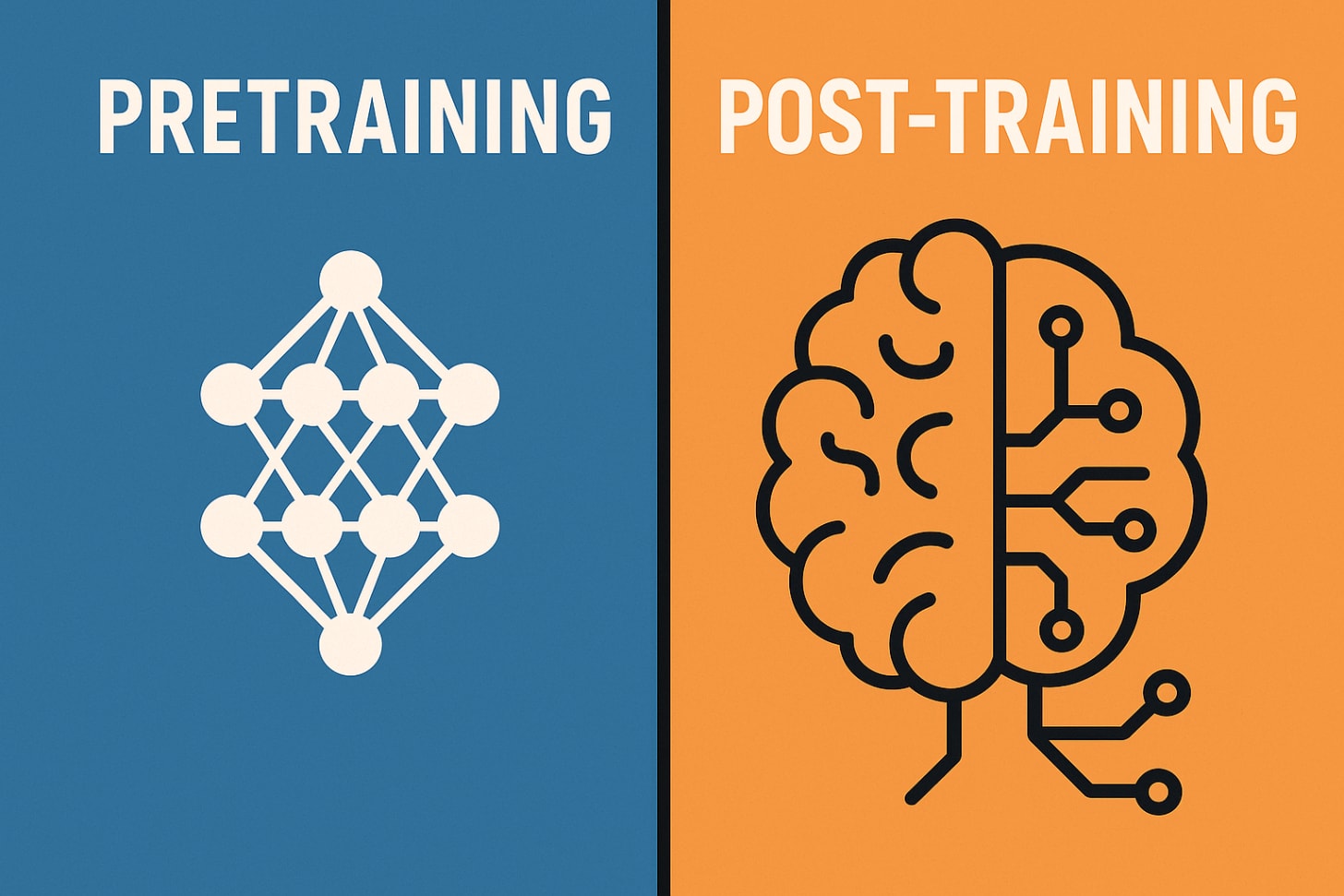Explaining one of the most monumental transitions in modern AI.
Modern “frontier” AI models – spanning language, vision, and multimodal systems – are now built in two major phases. First comes pretraining, where a large model (often called a foundation model) is trained on broad data to acquire general knowledge. Next is post-training, a suite of refinements (fine-tuning, alignment, etc.) applied after the base model is built. In this essay, we explore the transition from pretraining to post-training for cutting-edge AI models across modalities. We define the distinction between these phases, examine why post-training techniques are increasingly crucial (driven by needs for alignment, safety, controllability, efficiency, and more), and survey key methods like instruction tuning, reinforcement learning from feedback, preference modeling, supervised fine-tuning, and tool-use augmentation. We illustrate these concepts with case studies – including DeepSeek-R1, GPT-4, Google’s Gemini, and Anthropic’s Claude – highlighting how post-training strategies are implemented and what effects they have. A dedicated section delves into reinforcement learning in post-training (especially RLHF and the newer RLAIF), discussing benefits and current limitations. We close with reflections on how post-training is shaping the future of deploying and researching frontier AI models.
Pretraining vs. Post-Training: Two Distinct Phases
#Ai, #AIModels, #Anthropic, #CaseStudies, #Claude, #Cutting, #Data, #Deepseek, #DeepseekR1, #Deploying, #Edge, #EdgeAI, #Effects, #Efficiency, #Foundation, #FrontierAi, #Future, #Gemini, #Google, #GPT, #GPT4, #How, #Language, #Learning, #Model, #Modeling, #Models, #Multimodal, #One, #OPINION, #ReinforcementLearning, #RLAIF, #RLHF, #Safety, #Scale, #Studies, #Survey, #Tool, #Training, #Transition, #Tuning, #Vision, #Vs
Published on The Digital Insider at https://is.gd/uteOr2.

Comments
Post a Comment
Comments are moderated.